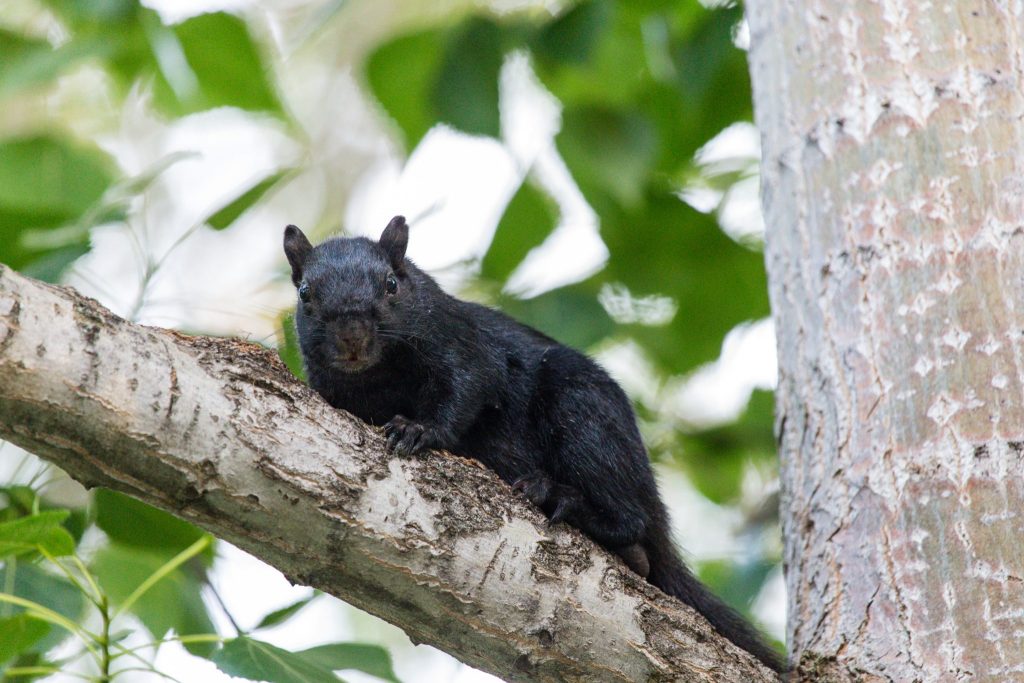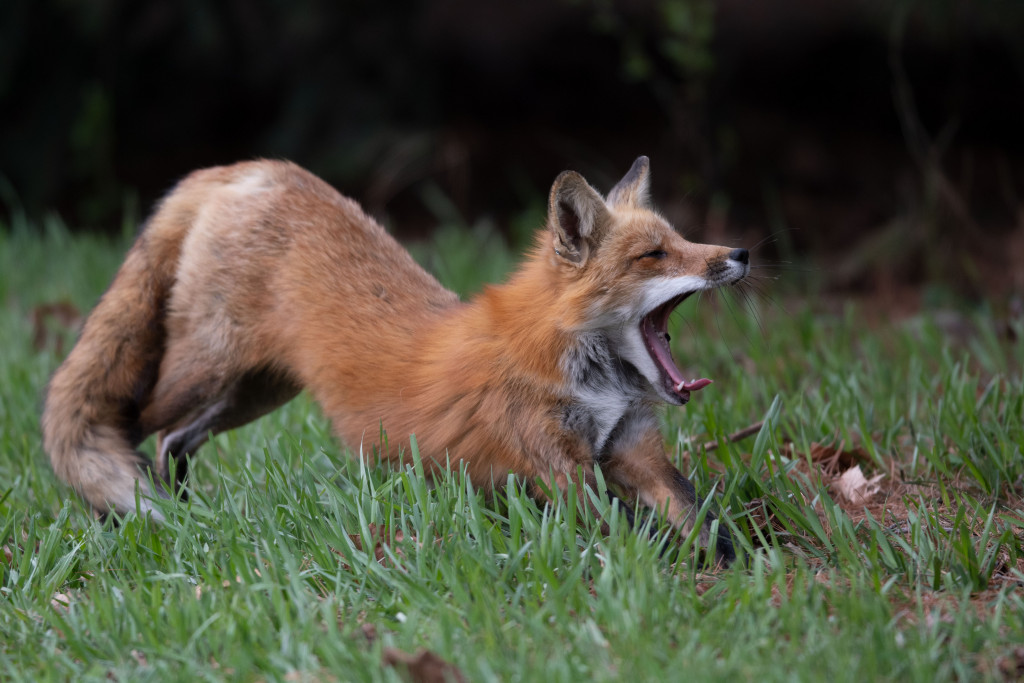
By Monica Macoubrie, Wildlife Educator
Although “urban wildlife” might sound contradictory, there is in fact a great amount of wildlife that you can view from your backyard, a city park or even downtown Omaha – you might see peregrine falcon roosting on our state capitol, or a garter snake in a sump pump, or a mallard duck that has taken up residence in your tulips. Urban wildlife has come a long way since the time of our ancestors. These animals have gone beyond simply tolerating humans. They’ve moved on to thriving in urban areas because of human presence.

Although these animals live among us, most of the time they go unnoticed. Animals like city pigeons or a squirrel at a bird feeder are common sights. But once in a while, we might glimpse a fox in our backyard or a turkey crossing an elementary school crosswalk. Or discover a wolf spider underneath our washing machine or a bat roosting in your garage. These moments make us stop and wonder.
So, what makes urban wildlife so successful? Well, many of these animals utilize human food sources. Humans are a messy species — we leave a lot of uneaten food in our trashcans, and we leave pet food outside. We also love to see the local cardinals visiting our birdfeeders. All these human practices leave a lot of extra food around for urban mammals and birds to thrive. Urban wildlife are also usually generalists, meaning they aren’t picky when it comes to the food they eat.
Another reason why urban wildlife is so successful is that they have a high tolerance of human disturbance. You’d rarely see a dickcissel in the city, but for animals such as pigeons, starlings and mice, human existence helps them thrive. Mice probably jump up and down at the idea of a new housing development, which offers them a guaranteed food source and shelter; they can simply change their behavior and adapt to that major environmental disturbance, even using it to their advantage. Many urban wildlife are successful because of this ability to adapt.
Urban wildlife species can be categorized as human obligates, exploiters and associates, adapters or avoiders. These titles relate to how urban wildlife benefit or are harmed by anthropogenic habitat changes. Some animals take advantage of the food humans put out, while others avoid contact with humans as much as possible.
Human Obligates
These animals are often domestic animals, so they’re not really wildlife, but they do play a major role in the urban wildlife community and its composition. These domestic animals often will disturb, compete and prey on native species. This interaction can drastically affect the function and diversity of urban wildlife, both in and on the fringes of human development. An example is domestic cats (especially outside cats), which are known as the number one songbird killer and have made considerable negative impacts on native and migratory bird species.
Human Associates and Exploiters
Human food sources could be a garden, your garbage can, pet food left outside or even domestic animals. These associates and exploiters do just that — they take advantage of anthropogenic resource subsidies. The exploiters are able to have much higher populations in urban settings rather than “in the wild” due to the availability of human supplied food. People have mixed emotions when it comes to these animals — they love them or they hate them. Songbirds, for instance, are positively regarded when they visit your feeder. On the other hand, predators that come in and kill pets are likely to have a negative association. Human exploiters and associates include opossums, raccoons, starlings, Eurasian-collared doves, crows and house mice.

Human Adapters
This type of urban wildlife utilizes human resources to survive, but they don’t necessarily receive any added benefit from living with humans. They have simply adapted their behavior to tolerate us. These animals are often found on the perimeter boundaries of developments. Deer, for instance, are often regarded as a human adapter as they can densely populate both wild areas and suburban habitats. Other human adapters include wildlife such as bobcats, coyotes, American robins, red foxes, striped skunks and red-tailed hawks.
Human Avoiders
This group of wildlife is not expected to use urban areas, but may find themselves around humans if they are trying to migrate or disperse. These animals usually have a history of conflict with humans and/or have specific habitat requirements for their reproduction strategies. They might also have foraging habits that are unattainable in human areas. Normally, this group of urban wildlife has extremely high mortality rates or decreased reproductive rates in urban environments. Mountain lions fall into this category as they usually avoid humans, but occasionally come into contact.
With all these different groups of wildlife, it is no wonder there are often human-wildlife conflicts. So, what are the best ways that we can avoid these conflicts? The best way is to reduce the attractants for unwanted animals. Lock trashcans, dispose of fruit from fallen trees, keep pets indoors — especially at night, keep livestock animals in a covered enclosure at night, and use birdfeeders that are designed not to spill or be inaccessible to non-target species.
Wildlife can be present even in the largest, densest cities, and scientists find urban wildlife fascinating to study. As we learn more about the biodiversity in our cities and how to maintain healthy ecosystem functions, we can hopefully find new ways to reduce property damage and encourage positive associations with our urban wildlife.
